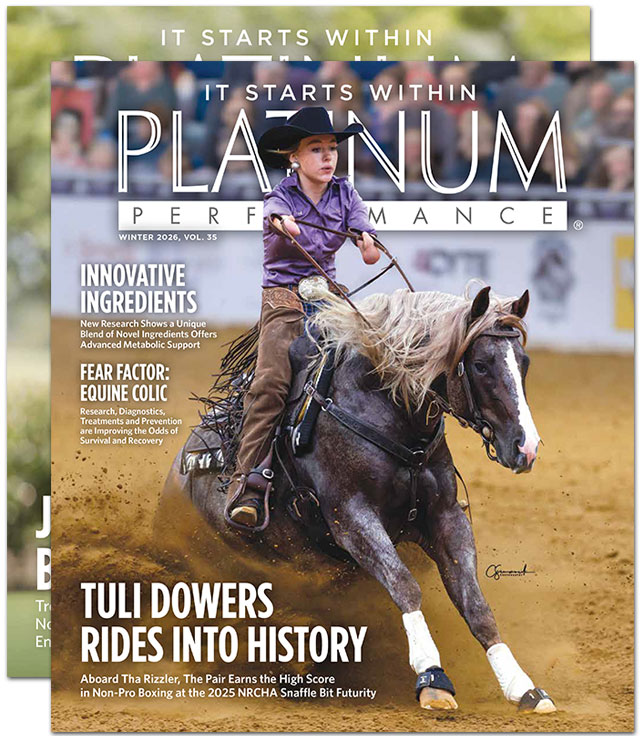Genetics Shows Us What Role Genes Play in Disease, How Environment and Diet Impact Gene Expression and Why Genes May be The Golden Ticket into the Realm of Precision Medicine
Is our fate predetermined by our genetics? Over the years, the study of genetics has evolved considerably. Celebrated veterinarian and equine genetics expert Dr. Carrie Finno, of the University of California, Davis, discusses advancements in the study and application of genetics in both humans and horses.
Although we know the basics — that we are, in fact, a product of our genes — the study of genetics seems to be composed of endless questions; each with the potential to reshape what we think, what we know and what’s possible. Perhaps the most pertinent question is: Are we bound by our genetics? Plainly said, are we destined to experience the same fate as our parents and grandparents when it comes to traits, abilities and predisposition for disease? The answer has evolved tremendously in recent years, with geneticists further unlocking the vast expanse of our genetic code to learn that while, yes, our genes do place us more firmly in line to acquire certain conditions, they are not solely judge nor jury. Enter the study of epigenetics, the science that tells us that while our genes may be handed down to us, it’s what we do with them that really counts. Dr. Carrie Finno — Director of the famed UC Davis Center for Equine Health and namesake of the Finno Laboratory at the university’s School of Veterinary Medicine — has been engrossed in the study of equine genetics (and vitamin E-associated neurodegeneration) for years, studying how equine genetics can impact risk for disease, the ability to predict onset, and the capacity to pinpoint more precise and effective treatments. The associate professor in UC Davis’s Department of Population Health and Reproduction is an avid student of both human and equine genetics, leading work that has pushed the boundaries of what we thought to be possible in horses while trading valuable data with her colleagues in the human medical space.
Dr. Finno and scholar-researchers like her are voracious pursuers of what’s next. What will be the key that opens the chest of discovery surrounding a horse’s genetics? Is there a better way to predict disease using their genetic structure? And finally, what can we do with the genetic cards they have been dealt? She is dead set on discovering the pieces that will form a more complete puzzle. Those include not only tailored and precise therapies to treat disease but also pinpointing biomarkers that will see disease coming, then prevent it before its impending arrival. “When we as veterinarians think of genetics, we think of the many diseases that we can test horses for and the many that don’t yet have tests available, but we know they have an underlying inherited cause. Then there are those diseases where inheritance — and most likely environment as well — at least play a role,” Dr. Finno says. The question then becomes, could veterinarians begin screening horses early for certain genetic variations, intervening with changes to the horse’s environment, management or diet to ultimately prevent disease from occurring or lessen its severity?
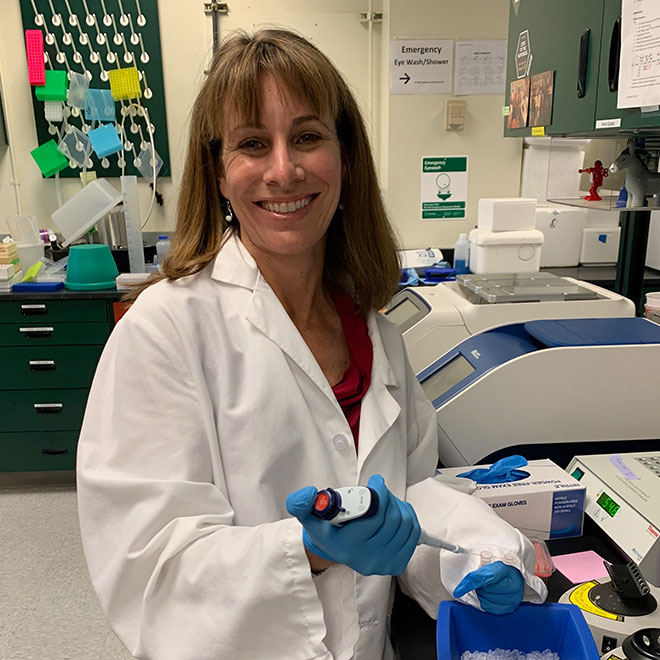
Dr. Carrie Finno — Director of the famed UC Davis Center for Equine Health and namesake of the Finno Laboratory at the university’s School of Veterinary Medicine — has been engrossed in the study of equine genetics (and vitamin E-associated neurodegeneration) for years, studying how equine genetics can impact risk for disease, the ability to predict onset and the capacity to pinpoint more precise and effective treatments.
The Rise of Precision Medicine
For so long, there has been a one-size-fits-all approach to treating and managing disease. An equine patient receives a diagnosis and is then prescribed a medication or medications to treat that condition in a standard dosage, or sometimes, one determined by little more than the animal’s weight. The evolution of precision medicine may upend this standard approach. Rather than treating cases with the assumption that we’re all biologically identical, instead the patient is treated according to their individual body chemistry and genetic structure. “The field is moving toward a more personalized, precision approach,” confirms Dr. Finno. “This will allow us to start treating horses more as individuals.” In 2019, at the inaugural Platinum Summit in Denver, Dr. Finno joined an all-star lineup of human and veterinary practitioners and researchers. There, she lectured on the topic of genetics and precision medicine, sharing the story of Myla, a 5-year-old girl who suffers from an extremely rare genetic variation — a 22 base pair deletion that affects DNA replication. Myla is one of only 26 people in the world diagnosed with this specific variation to her genetic structure that results in devastating neurological degradation, robbing her of the ability to speak, walk and live normally. “This is the first example of a drug company that came in and actually created a unique drug that was targeted toward that little girl’s specific disease,” says Dr. Finno. “Formerly, the approach was to say, here’s the disease, here’s the patient’s phenotype, and now we’re going to apply drug A to everything that looks like that disease, even if there are different subtypes within it. In Myla’s case, her team was able to go in, figure out the exact genetic variation, then design a drug quickly.” The speed at which Myla’s therapy was developed was unheard of, with the typical pharmaceutical development process usually moving at a snail’s pace. “It was more than a minor miracle to get FDA approval and actually start treating her as quickly as they did,” Dr. Finno says of the process. “This really set the precedent for using somebody’s genome and their own personalized disease to target therapies.” While Myla’s case is an outlier, it illustrates the results that are possible when a precision approach is taken to treating disease. “This is happening across the board now,” says Dr. Finno of the many applications for precision medicine. “Patients with Lou Gehrig’s disease (ALS, or amyotrophic lateral sclerosis) can donate stem cells that are used to target specific therapies at those individual cells in a Petri dish before applying the therapy to that patient. It’s a way to tailor treatments because everyone is a little bit different at a molecular level. If we can tailor treatments to that individual based on their genetic makeup, the disease process and the pathway that’s going on in that person, we’re going to be so much more precise.”
While equine veterinary medicine lags behind its human counterparts when it comes to fully understanding a horse’s genome, there is a solid understanding of the many variations that can occur. Millions of people have undergone whole genome sequencing, yet in horses the numbers are in the thousands. “We’re starting to push the envelope because it’s so cost effective to sequence now,” says Dr. Finno of the evolving technology. “We can sequence the genome of a horse for right around $1,200 or even a little under, and the price keeps going down. It’s actually easy to get the information. But you need to correlate that information with what you’re seeing in the horse.” Having the genetic information in your hand as a veterinarian is one thing but knowing what to do with it and having the tailored therapies available is something different. “We know the disease, and we know the phenotype. If we can start to correlate the genetic differences with what we’re seeing in the horse in front of us, it will allow us to potentially intervene earlier for a better outcome.” Dr. Finno and fellow geneticists envision the day when there will be readily accessible panels, giving veterinarians the opportunity to quickly and cost effectively screen horses for certain variants in the genome, then act on that information with targeted treatments or changes to training, diet and environment. “There will always be certain things you can’t change, but at least you’re informed, and that will make it a lot easier to make adjustments to what we can change, like diet and how we manage these horses.”
The implications of a precision approach to patient care are far-reaching. “We’ve all had situations where we can give three horses the same dose of Banamine; one improves and their inflammation goes down, one sees no effect and one may go into renal failure or another awful complication develops,” says Dr. Finno as an example. “We’re left thinking ‘What happened? Everyone was hydrated. Everything else was the same. Why did one horse have such a hard time?’” The answer may lie in how that particular horse’s unique genetic makeup, or genome, influences its response to the medication. “This is the field of pharmacogenomics and how we’ll target drug dosages in the future,” explains Dr. Finno. What’s being explored is how researchers will take a horse or human’s genetic makeup, then tailor a dosage or drug protocol to what their individual body requires, rather than providing the standard dosage that prescribes too little for no effect or too much and a detrimental result. “We could design anesthetic (sedation) protocols that would be tremendously beneficial in practice,” says Dr. Finno. “We’ve all had the experience as veterinarians where we give what we think is a regular dose of the correct drug, and it pretty much knocks one horse out while it barely touches the next horse, even if they’re the same breed, height and weight. Pharmacogenomics is going to be incredible, not only for treating disease but for drug testing as well.” While some horses process drugs at a more normal or expected rate, others metabolize them more slowly in comparison, increasing the odds that they’ll test positive for a drug that was ethically administered within the allotted time period.
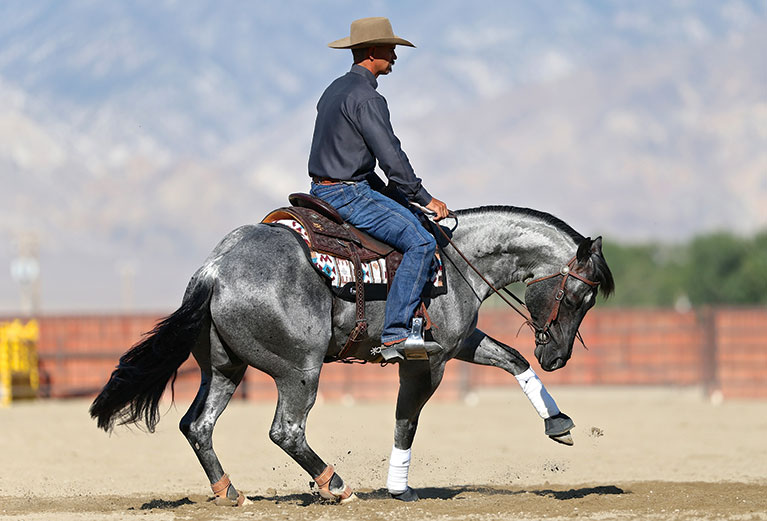
“(Precision medicine is) a way to tailor treatments because everyone is a little bit different at a molecular level. If we can tailor treatments to that individual based on their genetic makeup, the disease process and the pathway that’s going on in that person, we’re going to be so much more precise.”
— Carrie Finno, DVM, PhD, DACVIM, University of California, Davis
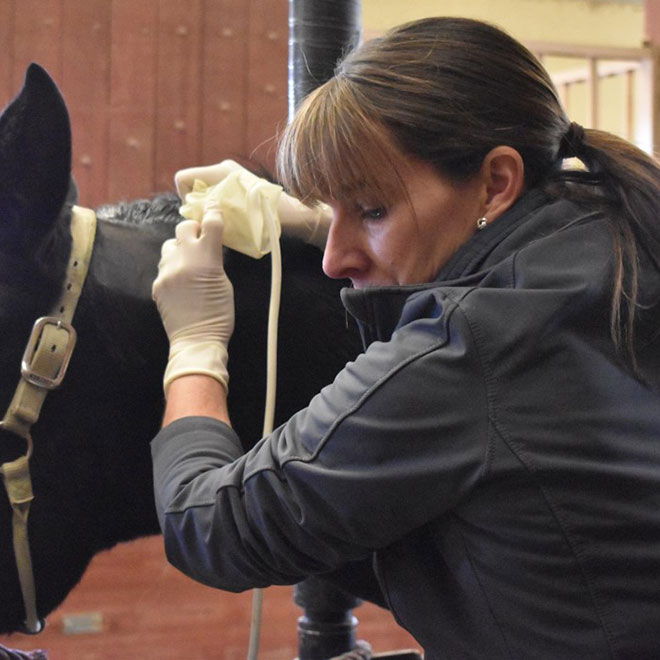
Multiomics
While sequencing a genome may lead to a treasure trove of valuable information, the next step is what is done with that data and how it is applied to make a real and measurable difference for the patient. There’s nutrigenomics — the study of the effects of food on gene expression and how genetic variations affect the nutritional environment — pharmacogenomics and a host of additional “omics” that come into play under the umbrella of a multiomics approach to patient care. Multiomics is a new approach where the data sets of different omic groups are combined during analysis.
How are these things contributing to more successful outcomes and what are veterinarians and their counterparts in human medicine projecting for the future? To illustrate that potential, Dr. Finno and her team at UC Davis launched the novel Pioneer 100 Horse Health Project, in collaboration with the university’s Center for Equine Health, in a curated research herd of 109 horses at UC Davis. The study was inspired by the Pioneer 100 Wellness Project at Seattle’s Institute for Systems Biology, led by Drs. Leroy “Lee” Hood and Nathan Price. This human study combined personal, dense, dynamic data clouds with tailored behavioral coaching to optimize wellness for individuals. Published in 2017, this original Pioneer 100 Wellness Project included whole genome sequencing, the analysis of blood, urine, stool and saliva samples and personal measurement of activity. From the personal, dense, dynamic data clouds that were produced for each participant, the research team conducted an integrated analysis that included correlation of whole genome sequencing results with measurements over time of proteins, metabolites, microbiome, clinical assays and lifestyle metrics.
Participants were tracked, allowing researchers to begin to arrange the socalled puzzle. In the study, the group was observed over time and when some members inevitably developed disease, the research team dove into their blood, microbiome and genetic structure, attempting to pinpoint predictive biomarkers that were present and could have helped to identify that particular disease in its earliest stages, perhaps before it had the opportunity to become clinical. “We took that model, and we’ve now applied it to horses here at UC Davis,” says Dr. Finno of the Pioneer 100 Horse Health Project that could hold massive promise for veterinary medicine. “We use the teaching and research horses that live here at UC Davis,” she explains of the research herd involved in the study. “Each of the horses has complete medical records. We control their diet, and we know everything about them. We’ve sequenced their entire genomes and have also looked at their metabolomes and microbiomes by analyzing both blood and fecal samples over two seasons now. We have repeated these collections and analysis, and over time they’ve had things happen to them — a colic, for instance, a laminitis episode or maybe somebody has acquired Cushing’s disease or metabolic syndrome.” Dr. Finno and her team began correlating those acquired disease states and phenotypes with that horse’s multiomic data sets, including their microbiome, genome and metabolome. “The really cool thing is that we have a model from the human side,” she adds. Through the computational algorithms used in the original Institute for Systems Biology human study, the model has been set to form links between certain “omics” data and the health of these equine patients. Specifically, the team looks for correlations and the presence of biomarkers that act as indicators for disease. “For us, we see that a particular horse may be developing Cushing’s long before its ACTH level goes up, and maybe we can use a certain biomarker to track that horse and intervene earlier. That’s the big vision of the project.”
Epigenetics
Perhaps one of the most important advancements in the study of genetics is seen in the field of epigenetics, the elements that directly influence the expression or behavior of our genes. These factors include environmental influences, dietary interventions, exposure to toxins or pollutants, exercise regimens and management; all things that take the genetic hand we’ve been dealt and decide how those cards are played. While human genes may predispose us for certain diseases, it’s how we influence those genes that makes the most profound difference in our long-term health. “That’s the grandiose vision of individualized medicine,” says Dr. Finno. “It’s how we can leverage genetics and use all of this information to maximize health and performance.”
Dr. Finno and other genetic researchers are attempting to crack the code, per se, in terms of how we can change genetic destiny via diet and lifestyle changes for the horse. “Your DNA doesn’t change. Your DNA is your DNA, and you inherit that from your parents. The field of epigenetics, where DNA interacts with proteins, is also inherited, passed down through many generations. We have the ability to change that, and it’s incredibly intriguing that we can change it not only for ourselves but for our children,” she continues. “The question is, how do you know you’re making an impact? You eat better and exercise more, but how do you know if you’re making a difference?” The answer is seen in the study of finite indicators that can highlight to researchers whether a patient is making a marked difference or there’s more work to be done. “That’s where some of these biomarkers could come in,” explains Dr. Finno. “As an example, as a human you could hear that, yes, you have a genetic predisposition for breast cancer. In addition, we have your metabolite profiles, and there are a couple of metabolites here that, when they go up, it means that your risk is increasing,” she says. “How then, do we intervene?” she asks rhetorically. “Could we try some things that could bring that level down a bit, so we can get to it earlier and your chances for developing that disease decrease?” The thought of disease prediction is yet another critical piece in the puzzle of a more precise approach to detecting, preventing and treating disease for longer and healthier lives in both horses and humans. The more we are able to prevent or even delay disease, the more we buy invaluable time and provide a shining glimmer of hope for not only the conditions that impact the horses we love but also prolific conditions impacting their riders, like dementia, metabolic disorders and various cancers. Dr. Finno and her team harbor great hope for the potential game-changing impact of this work. “Prevention is worth its weight in gold,” she affirms. “As we all know, treatment can be a lot harder. If we can prevent or delay, then we’ve got a better chance once the disease is there.”
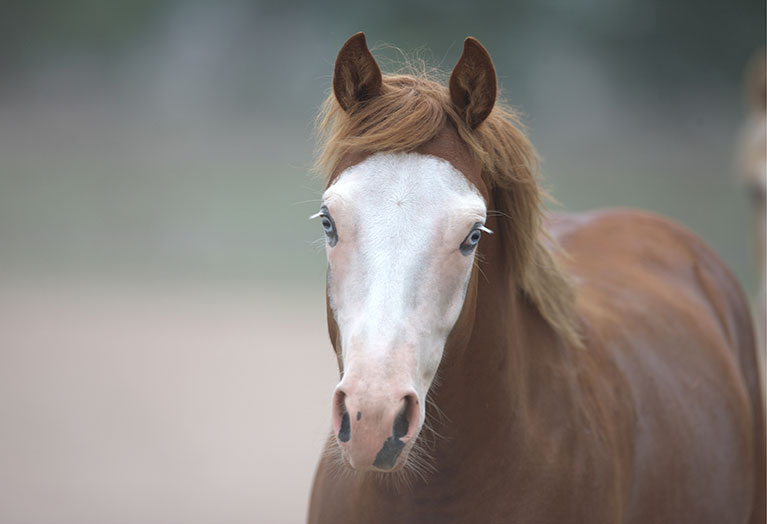
While we can see genetic traits show up on the outside of a horse, geneticists are looking deep under the surface. Perhaps one of the most important advancements in the study of genetics is seen in the field of epigenetics, the elements that directly influence the expression or behavior of our genes. These factors include environmental influences, dietary interventions, exposure to toxins or pollutants, exercise regimens and management.
PHOTO BY ELIZABETH HAY PHOTOGRAPHY
Nutrigenomics
Among the various “omics” making up the field of epigenetics is the study of nutrigenomics. Considered an important cousin to the field of pharmacogenomics, nutrigenomics deals specifically with how nutrition can interact with genes and influence genetic expression. “Based on your genetics, you might have different needs than somebody else,” explains Dr. Finno. Outside her window, she has a living, breathing and rather large example of nutrigenomics in the form of a strapping black Percheron horse named Liberty. “He was donated here at 16 years old because they couldn’t get weight on him. He was skinny and muscle atrophied, and the problem was that he couldn’t back up to the hitch,” details Dr. Finno of Liberty’s state of appearance and health upon arrival at UC Davis three years ago. With a suspected case of shivers, Dr. Finno was called in, and she and her team did a thorough workup on Liberty. What they discovered was a clear-cut example that horses are, in fact, individuals. What may be the “norm” for most isn’t necessarily a hard and fast rule. “Before I had even seen him, a colleague called me and said, ‘You always talk about vitamin E deficiencies, and I think this horse is deficient,” remembers Dr. Finno. “She didn’t think he had shivers. I came out and took a look at him. He was shaking. He couldn’t pick up his feet for the farrier. He was skinny and had no muscle; he looked awful. With the trembling and the other signs he was showing, he looked like he had a myopathy we’ve seen before that specifically targets the muscle. It’s caused by a vitamin E deficient myopathy, and it’s reversible. Oftentimes, when the neurologic system is affected, we can’t reverse it, but if it’s in the muscle, we’ve got a chance,” says Dr. Finno. She took a tailhead muscle biopsy, chosen from that particular spot due to the location of the postural muscles. Those muscles will be affected when a vitamin E deficiency is at work. The biopsy was sent to Dr. Stephanie Valberg at Michigan State University’s College of Veterinary Medicine, who confirmed the specific vitamin E deficient myopathy. Within six to eight weeks of being supplemented with vitamin E, Dr. Finno and her team had virtually a new horse on their hands. “His coat had a shine to it, his muscles were back, his tremors had stopped and he could finally pick up his feet for the farrier,” says Dr. Finno with excitement still in her voice. Interestingly, the target level of vitamin E in a horse’s blood is between 3 to 6 micrograms per milliliter. When Liberty was rechecked after being given supplemental vitamin E and seeing his symptoms subside completely, his level was found to be at 9 micrograms per milliliter. Alarmed, the team backed off on his vitamin E dosage and within a week, Liberty’s symptoms returned. During this period, his vitamin E level was at 6 micrograms per milliliter, considered to be a normal level. Liberty showed the team that he has a unique need to maintain a higher level of vitamin E to remain healthy with normal neuromuscular function. “He’s an amazing horse; he’s kind of our ambassador for vitamin E here,” says Dr. Finno of the now 19-year-old Liberty’s case and the lessons learned from this endearing ebony giant.
Environmental Influence
In addition to the role that nutrition plays in directly influencing gene expression, environmental factors can come into prime focus as well. How are horses being stalled, fed, pastured and so on? As it turns out, they all come into play. “A prime example is equine neuroaxonal dystrophy (eNAD),” says Dr. Finno of the degenerative disease of the central nervous system she investigated at length during her doctoral studies. A vitamin E deficiency coupled with a certain genetic structure and environmental elements can set the stage for NAD. “If you have a horse with the genetics who has been raised on natural pasture in Kentucky or irrigated pasture in California, they’re unlikely to develop the disease,” explains Dr. Finno. “You take that same horse and put it on a dry lot, and they will.” Dr. Finno and her counterparts are determined to unravel the mysteries surrounding how specific environmental influences can either increase or decrease a horse’s propensity for developing certain inherited genetic conditions. “As veterinarians, especially when we’re the ones going to the farms, we need to be asking and observing how the horses are raised. When a horse is at the clinic, we can miss that critical environmental piece and also what their nutrition looks like,” says Dr. Finno, who is adamant that these factors be included in a thorough workup when a genetic disease is suspected.
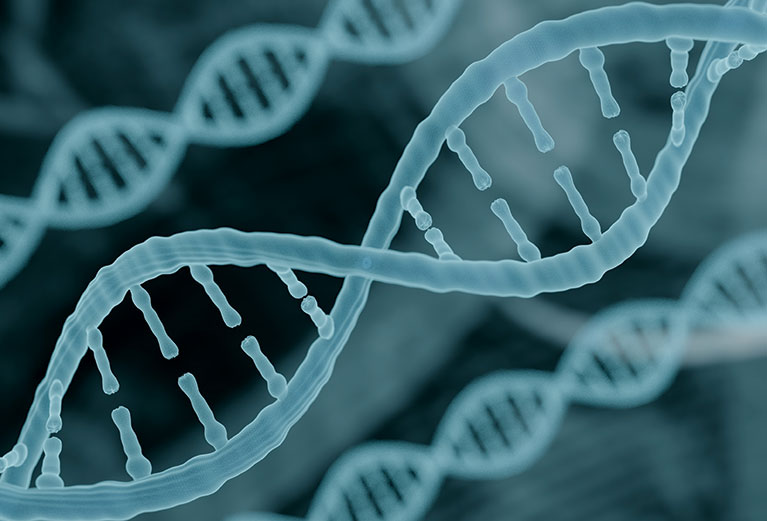
“We know the disease, and we know the phenotype. If we can start to correlate the genetic differences with what we’re seeing in the horse in front of us, it will allow us to potentially intervene earlier for a better outcome.”
— Carrie Finno, DVM, PhD, DACVIM, University of California, Davis
What Lies Ahead
While the study and application of multiomics and predictive genetics may sound futuristic, geneticists are already moving fast to better understand how our genes can be used to identify, predict, correctly pinpoint and more precisely treat disease. While progress is being made, Dr. Finno and other genetic researchers like to caution us that their priority isn’t simply discovery, rather it’s substantiated discovery. “When we’re talking about disease, it needs to be solid. We need to be convinced as researchers before we start rolling out tests for these genetic diseases,” she says. “We can be excited and still be really good scientists at the same time, knowing that due diligence and patience are important. It’s going to be worth the wait.”
While we know that the horse and rider are each a product of their genes, we have learned that outside influence may very well determine how those genes behave. It’s empowering to see that by changing a horse’s diet, environmental surroundings, management program and exercise, we can alter the course of their genetic expression and potentially decrease their risk for developing certain inherited genetic conditions. The future holds extreme potential benefits for the study of both human and equine genetics, and the day is perhaps closer than we think when predictive biomarkers will be readily available, substantiated and ready to more easily test for early signs of looming genetic conditions. With that knowledge and the study of epigenetics, the hope is that we can intervene and add precious time to the lives of both horses and the people who love them. Dr. Finno and her team are among many brilliant researchers around the world who have devoted themselves to helping deliver us to a better and more healthy life by understanding our genetics and making them work for us, not the other way around. Ask her where we’re headed, and Dr. Finno will put it plainly: “The sky's the limit.”
It’s easy to believe. When Dr. Carrie Finno puts her mind to something, clear a path. She’ll make it happen and leave the horse world better than she found it thanks to her commitment, research and ingenuity.
Tune in to the Genetics Podcast with Dr. Finno
Celebrated veterinarian and genetics expert Dr. Carrie Finno discusses advancements in the study and application of genetics in humans and horses.
Listen
by Jessie Bengoa,
Platinum Performance®

Contributing Veterinarian:
Carrie Finno, DVM, PhD, DACVIM
University of California, Davis
You May Also Like
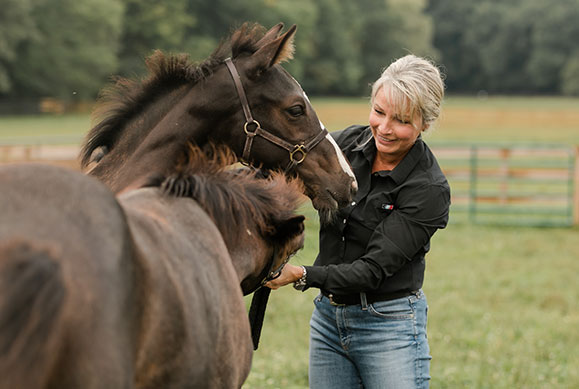
The Future of Veterinary Medicine
Dr. Cliff Honnas is Considered a Master of Kissing Spines. Dr. Lisa Fortier: A Revered Surgeon and Regenerative Medicine Guru. Dr. Shane Miller is an Admired Surgeon and Sports Medicine Practitioner
Read More
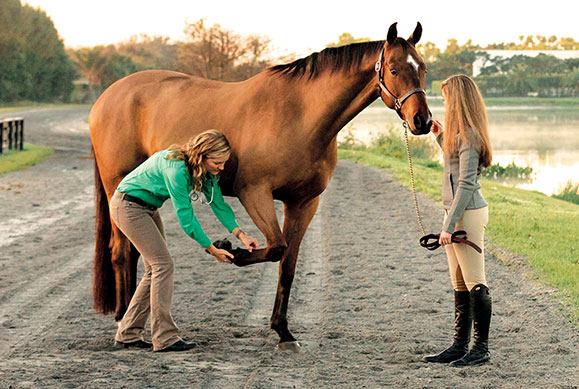
Supporting The Equine Joint
Efforts to keep joints healthy, sound and functioning are at the forefront of the care and management of every horse
Read More
